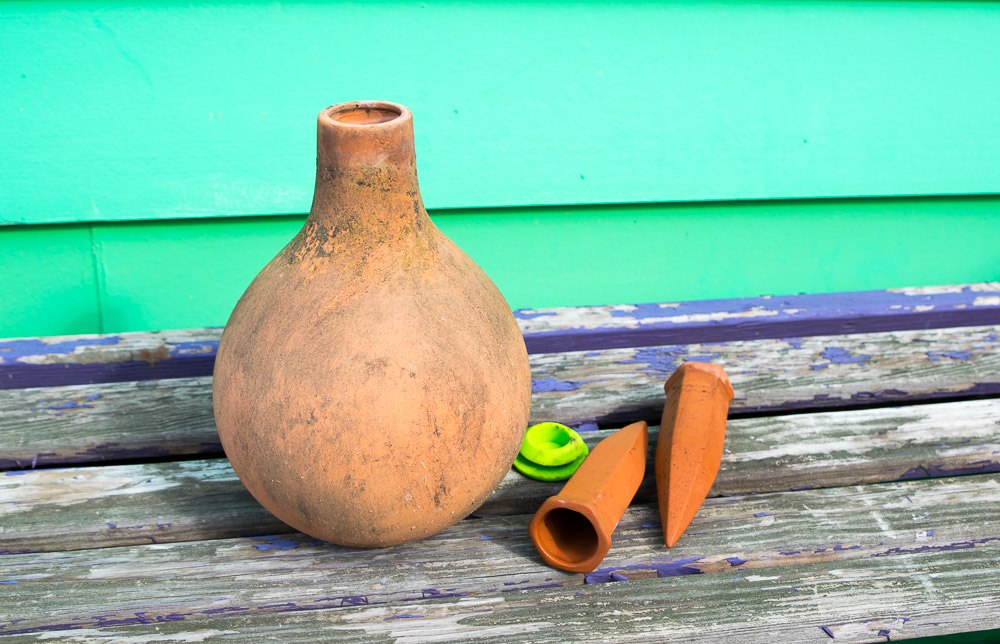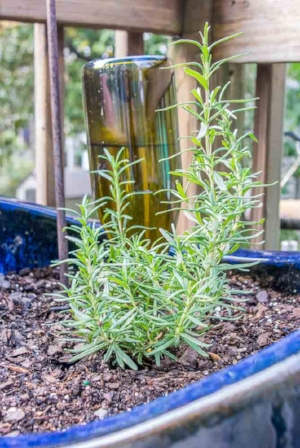Clay Ollas: Cheap and Easy Self-Watering Garden System
It gets hot and dry during Virginia's growing season, but we have found a self-watering solution for raised beds and containers. We tried ollas for easy garden watering last summer, and they worked so well that we're installing more. Ollas work sort of like drip irrigation, but they're much cheaper and easier to install. Fill your ollas with water from a rain barrel and you may not even need your hose this season.
What is an olla?
The olla releases water slowly for an easy self-watering system.
A classic olla (pronounced "oy-yah") is an unglazed terracotta pot, usually round, with a really narrow mouth and a lid. You bury it up to the neck in your garden, then fill with water and cover. I don't know where they come from originally but it's a Spanish-language pronunciation so I have to assume somewhere in Latin America.
I've seen similar watering concepts used in the Middle East, which makes me think this used to be a pretty widespread water conservation method before the advent of plumbing.
How the olla self-watering system works
One of the keys to an olla is that the terra cotta is unglazed. That way the water seeps out slowly, keeping the soil damp within a pretty wide radius. You also want an olla with a narrow mouth so that it doesn't lose much water via evaporation.
Because the water is deep in the ground, an olla encourages roots to grow more deeply than surface watering would. Occasionally I'll put an olla out for winter storage and it will have fine roots encrusted around it. They really work!
You fill an olla every 7-10 days, roughly, depending on its size and how dry the soil is. Check them regularly (you can dip in a straw or dry stick to measure the moisture level), and learn what your seepage rate is.
Ollas for container plants
Even drought-hardy rosemary benefits from self-watering.
We liked our ollas so much that we started looking for a smaller type for our containers. The pots we grow herbs in are too small to bury an olla of any useful size, but we did find unglazed terracotta plant stakes designed to work with wine bottles.
Bury the stake in the container so that the rim is about 1/2" above the soil surface. Fill a wine bottle with water (remove the foil around the neck) and flip it over so that the neck rests in the terracotta stake. It will empty slowly over several days as the water seeps through the stake.
I've seen these watering stakes come with very pretty glass globes, but the ones I've seen are far too small to work well. I'd be filling them every day! A wine bottle keeps our rosemary, thyme or mint watered for about a week - enough time to go on vacation and not ask someone to water the pots.
Make your own olla
We bought our ollas from Growoya but you can also make your own. Use an unglazed terracotta pot and matching saucer - water should not bead up, but soak in quickly. Scrub them well to just in case there's some surface sealer. Bond the saucer tightly to the wide mouth of the pot with silicon sealer. Then you can bury the pot upside down and use the bottom drainage hole to add water.
In late fall, when we pull out the last of our vegetables, we also pull out the ollas and clean them inside and out. Because they are porous they can crack if they absorb moisture and then freeze. We store them over the winter, and let our winter cover crop fend for itself once it's established.
As water becomes more scarce across the planet, we will need to practice more sustainable garden watering methods. Try some ollas this growing season and see what a difference it makes for your plants.


